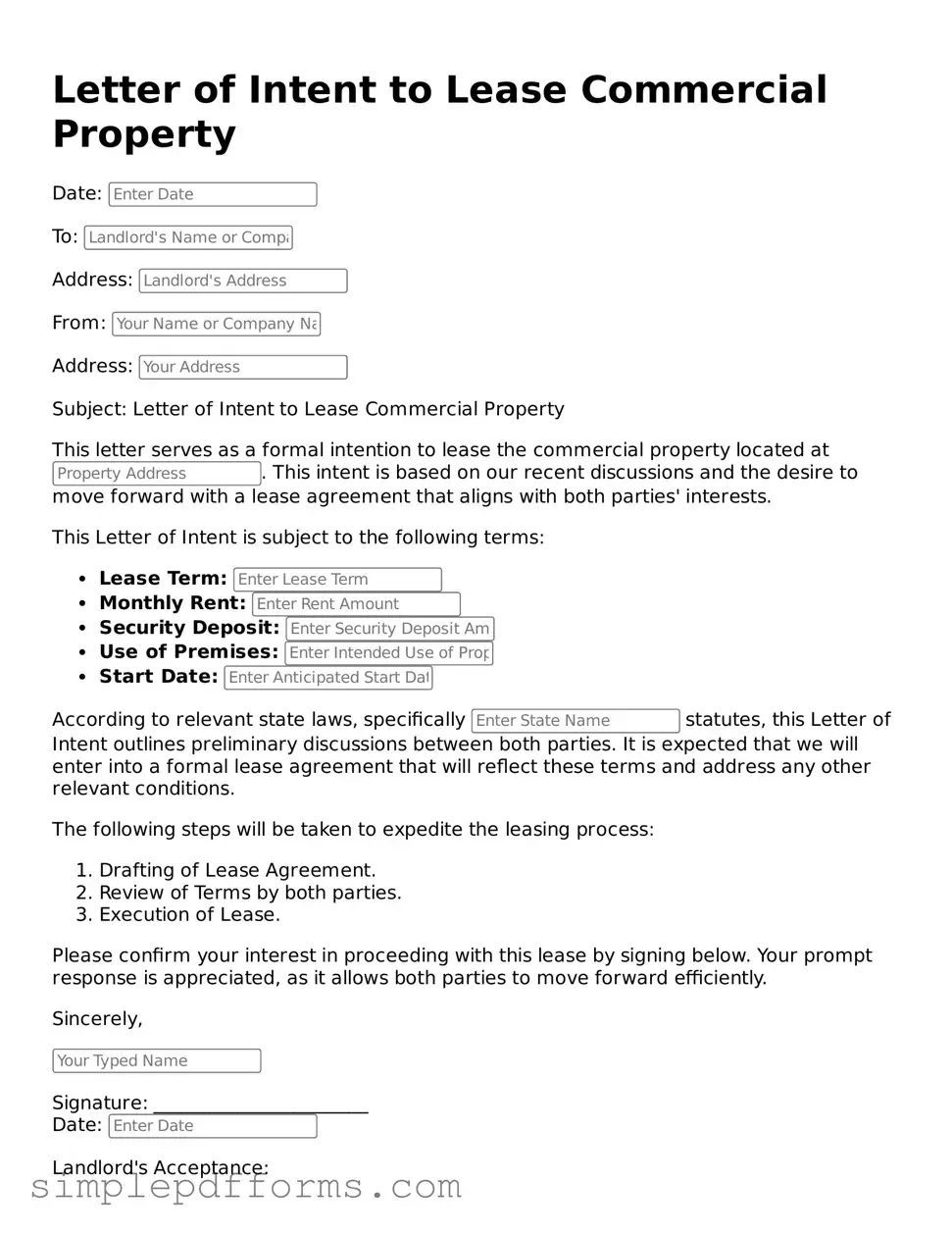Free Letter of Intent to Lease Commercial Property Form
The Letter of Intent to Lease Commercial Property is a preliminary document outlining the terms and conditions that a prospective tenant and landlord agree upon before entering into a formal lease agreement. This form serves as a roadmap for negotiations, helping both parties clarify their expectations. By detailing essential elements like rental rates, lease duration, and property use, it lays the groundwork for a successful leasing process.
Open Letter of Intent to Lease Commercial Property Editor Now
